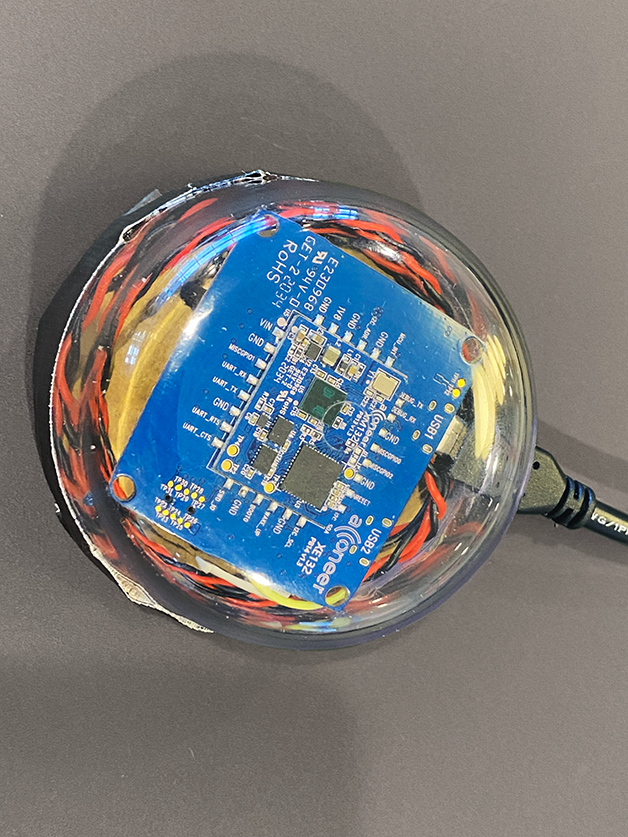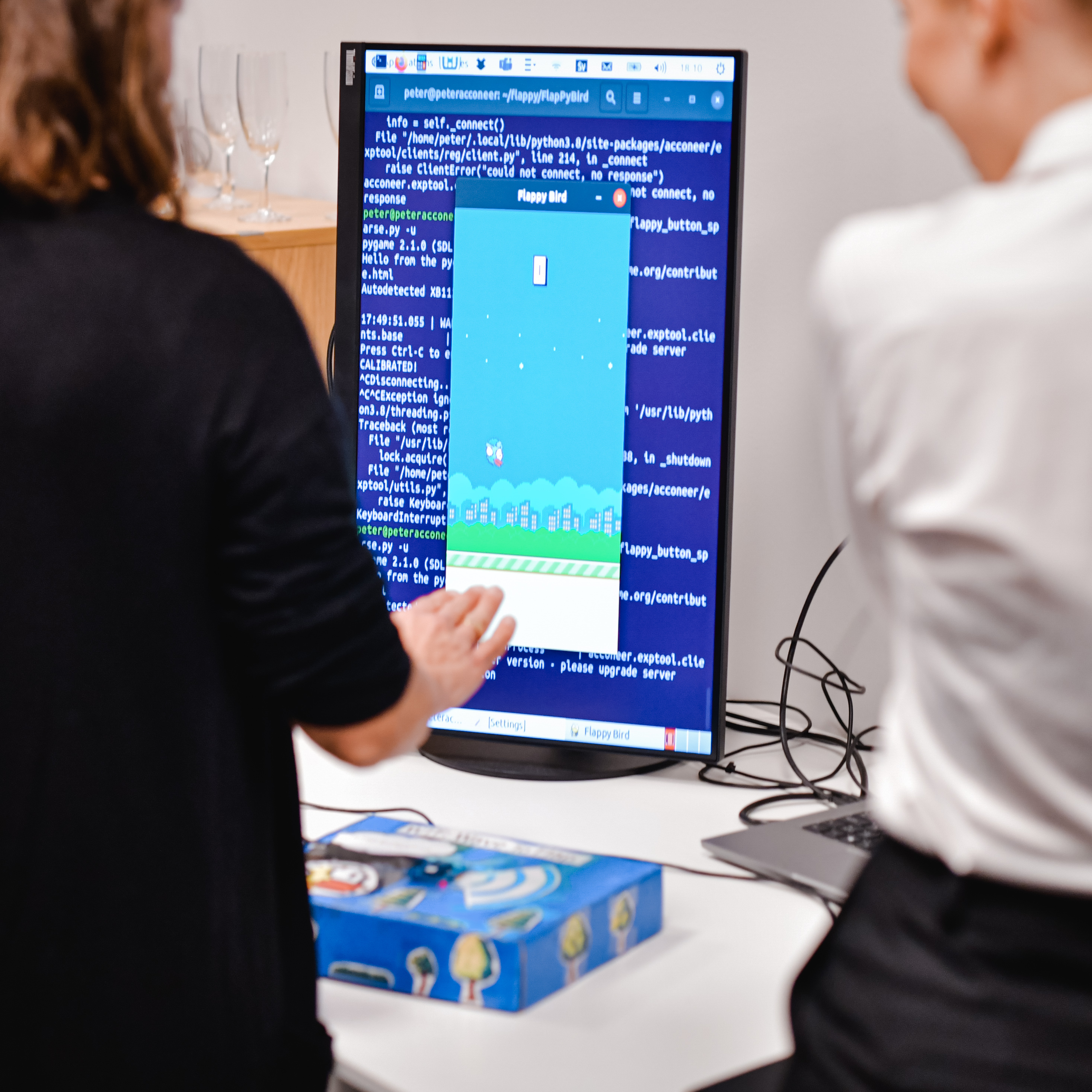Use the A1 radar sensor to create a touchless button. By analyzing the radar signal using a newly implemented specific setting in Exploration tool, called “Button press (sparse)”, you can easily build your own touchless button to trigger actions. For example, we tried using it as a controller for the classic game “Flappy bird” in our office.
HARDWARE
To implement this proof of concept, we used the following hardware:
- XE132 Evaluation Board, which includes the integration-ready XM132 Entry Module.
(Order XE132 from: DigiKey | Mouser | Codico) - PC running Exploration Tool.

EXPLORATION TOOL SETTINGS
Connect your XE132 to Exploration Tool and choose Button Press (sparse) in the “Select service or detector” drop down menu. Now you can set the range, update rate and more to fit your intended use case.
Changing the sensitivity will control how small movements the button should react to. Once you start measuring, the sensor will calibrate itself and you can see how button press events are triggered as you move your hand over the sensor.
SENSOR SETTINGS
The exploration tool will have a default setting for the sensor which works well. If you would like a different range interval, this is something that can be adjusted as long as at most two depth bins are within the range. Using a longer range would require you to get your hands dirty and modify the algorithm. The suggested approach to achieve this would be to run the algorithm (including calibration!) on each depth in the desired range, then trigger if any of the depth bins detect a button press.
ALGORITHM DETAILS
On a conceptual level, the algorithm suppresses the smallest deviations (that is, the noise) in the amplitude of the radar signal and amplifies any other high frequency movements. This is achieved by subtracting a low passed version of the signal, and comparing the result against a threshold. If the result is below the threshold, we set it to zero. The value after the threshold is then squared and again low pass filtered. This value is compared against a threshold to detect if we have a button press. In order for the press to trigger again, the value needs to fall below a cool-down threshold as well.
The calibration works by adjusting the constant of the low-pass filter, a smaller constant (and thus a faster filter) makes the filter follow the signal more closely, and vice versa for a larger constant. When the filtered value is subtracted from the raw value, the closer the filtered value matches, the less signal will remain. So the calibration adjusts the constant to match a predefined output level.
To dig deeper into the algorithm, check out the source code at GitHub!
TRY IT ON YOUR OWN AND GET IN TOUCH
To build your own version of this setup, order the XE132 Evaluation Board from Digi-Key. Combined with a PC running our Exploration Tool you can play around with this and many other use cases. To get started, head over to our Developer site where you find software downloads, get started guides and more. If you want to learn more about radar technology and Acconeers pulsed coherent radar (PCR), check out our Radar Sensor Introduction.
If you try this, or work on something else, we’d love to hear about your project! Please get in touch with us on innovation@acconeer.com.

